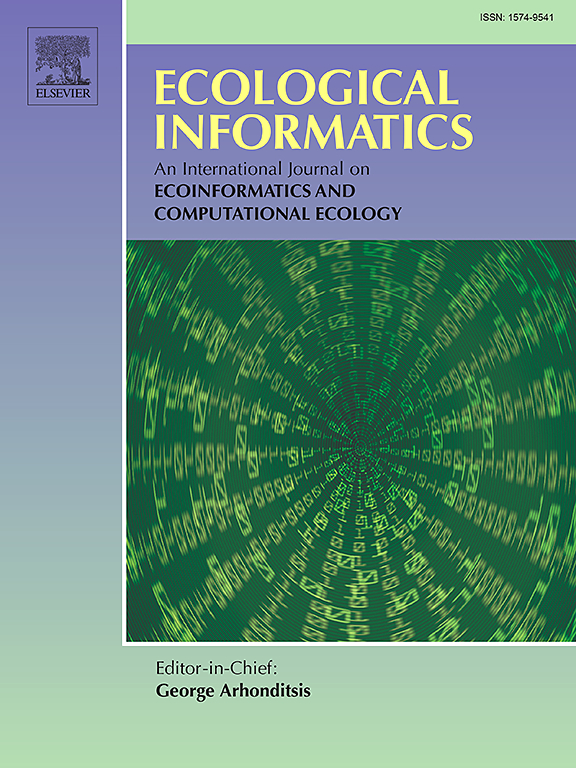评价传粉媒介生态空间决策支持系统的可用性和效用
IF 7.3
2区 环境科学与生态学
Q1 ECOLOGY
引用次数: 0
摘要
环境空间决策支持系统(SDSS)可以帮助用户根据地理信息系统(GIS)数据(通常使用交互式地图)做出生态选择。然而,这些工具通常服务于不同的涉众群体,每个人都有自己的期望和目标。在这里,我们展示了以用户为中心的设计和评估迭代过程的结果,该过程形成了基于地图的传粉媒介健康决策支持工具Beescape NexGen的全面重新设计和开发。该工具可帮助养蜂人、种植者、研究人员和其他团体评估其景观质量,以支持蜜蜂等传粉媒介。基于对Beescape原型的早期可用性评估以及与关键利益相关者的后续需求评估焦点小组的结果,我们设计了一个全新的界面,并实现了Beescape NexGen工具的改进版本。与养蜂人爱好者一起进行的Beescape NexGen可用性研究发现,与该工具的前一版本相比,该工具的可用性和实用性有了显着改善。这个项目是生态信息学中迭代的、长期的以用户为中心的设计项目的一个例子,它直接比较了两个版本的SDSS。本文章由计算机程序翻译,如有差异,请以英文原文为准。

Evaluating the usability and utility of a spatial decision support system for pollinator ecology
Environmental spatial decision support systems (SDSS) can help users make ecological choices informed by geographic information system (GIS) data, often using interactive maps. However, these tools often serve diverse stakeholder groups, each with their own expectations and goals. Here, we present results from an iterative process of user-centered design and evaluation that shaped the full redesign and development of the map-based pollinator health decision support tool Beescape NexGen. This tool assists beekeepers, growers, researchers, and other groups assess the quality of their landscape to support pollinators such as bees. Building upon results from an earlier usability evaluation of a Beescape prototype and a follow-up needs assessment focus group with key stakeholders, we designed an all-new interface and implemented an improved version of the tool called Beescape NexGen. A usability study of Beescape NexGen conducted with hobbyist beekeepers found significant improvements in usability and utility compared to the previous version of this tool. This project serves as an example of an iterative, long-term user-centered design project in ecological informatics resulting in direct comparisons between two versions of a SDSS.
求助全文
通过发布文献求助,成功后即可免费获取论文全文。
去求助
来源期刊

Ecological Informatics
环境科学-生态学
CiteScore
8.30
自引率
11.80%
发文量
346
审稿时长
46 days
期刊介绍:
The journal Ecological Informatics is devoted to the publication of high quality, peer-reviewed articles on all aspects of computational ecology, data science and biogeography. The scope of the journal takes into account the data-intensive nature of ecology, the growing capacity of information technology to access, harness and leverage complex data as well as the critical need for informing sustainable management in view of global environmental and climate change.
The nature of the journal is interdisciplinary at the crossover between ecology and informatics. It focuses on novel concepts and techniques for image- and genome-based monitoring and interpretation, sensor- and multimedia-based data acquisition, internet-based data archiving and sharing, data assimilation, modelling and prediction of ecological data.
 求助内容:
求助内容: 应助结果提醒方式:
应助结果提醒方式:


